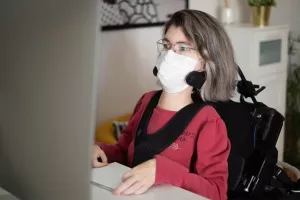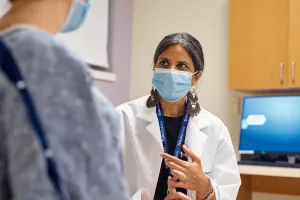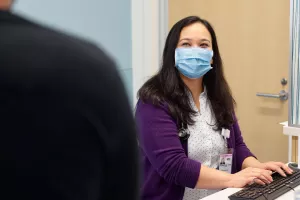Muscular dystrophy is a series of genetic neuromuscular disorders that cause muscle loss and weakness. Muscular dystrophy is usually caused by abnormal genetics, and most people are diagnosed during childhood.
There’s strength in numbers
When you or a loved one receive a muscular dystrophy diagnosis, it's a life-altering moment. But it's important to remember that you're not alone.
We partner with the Boston Area Chapter of the Muscular Dystrophy Association to help patients and their families better manage the challenges of progressive neuromuscular disorders like these.
While there's not yet a cure for muscular dystrophy, you can count on us to help you manage pain, maintain mobility and enjoy a higher quality of life.

Conditions
3 important factors define each type of muscular dystrophy:
- The age when symptoms appear
- The muscle groups affected
- Severity of the muscular dystrophy
9 main groups of muscular dystrophy affect different parts of the body, including:
- Becker muscular dystrophy (BMD): Belonging to the same group as Duchenne muscular dystrophy (DMD), this inherited condition slowly weakens leg and pelvic muscles.
- Congenital muscular dystrophy (CMD): This genetically linked group of muscular dystrophies mostly affects voluntary muscles that surface around birth.
- Distal muscular dystrophy (DD): A group of rare diseases that weaken muscles in the lower arms and legs, also known as the distal muscles.
- Duchenne muscular dystrophy (DMD): An aggressive, inherited type of muscular dystrophy that largely affects men and those assigned male at birth (AMABs) during childhood.
- Emery-Dreifuss muscular dystrophy (EDMD): This type of muscular dystrophy becomes apparent by age 10 and weakens the shoulder, upper arm and calf muscles.
- Facioscapulohumeral muscular dystrophy (FSHD): This genetic disorder mostly affects facial, shoulder and upper arm muscles.
Limb-Girdle muscular dystrophy: This form of muscular dystrophy mostly targets the shoulder girdle (bones surrounding the shoulder area) and the pelvic girdle (bones surrounding the hips). - Myotonic dystrophy (DM): Stemming from the word "myotonic" (meaning the inability to relax muscles at will), this form affects muscles and organs.
- Oculopharyngeal muscular dystrophy (OPMD): This rare genetic condition slowly weakens eyelid and throat muscles.
While there isn't a cure for muscular dystrophy, there are steps we can take to manage your symptoms. You can trust that we'll provide lifelong care for your muscular dystrophy condition.

From regular office visits to inpatient stays, find the health care you need and deserve close to home.

Meet the doctors and care team devoted to supporting you every step of the way along your path to better health.